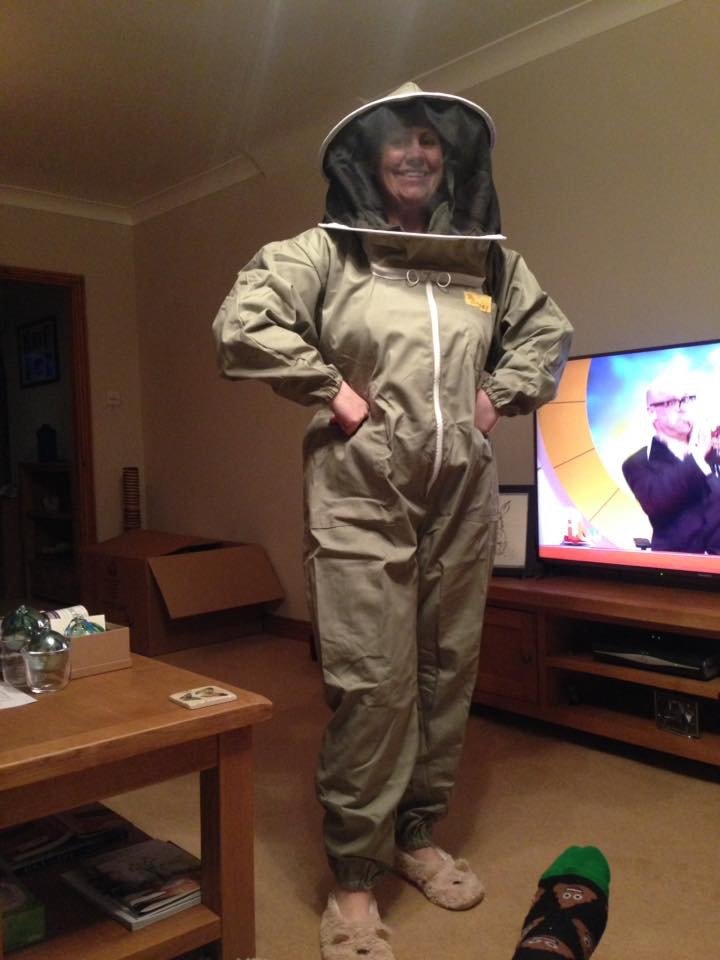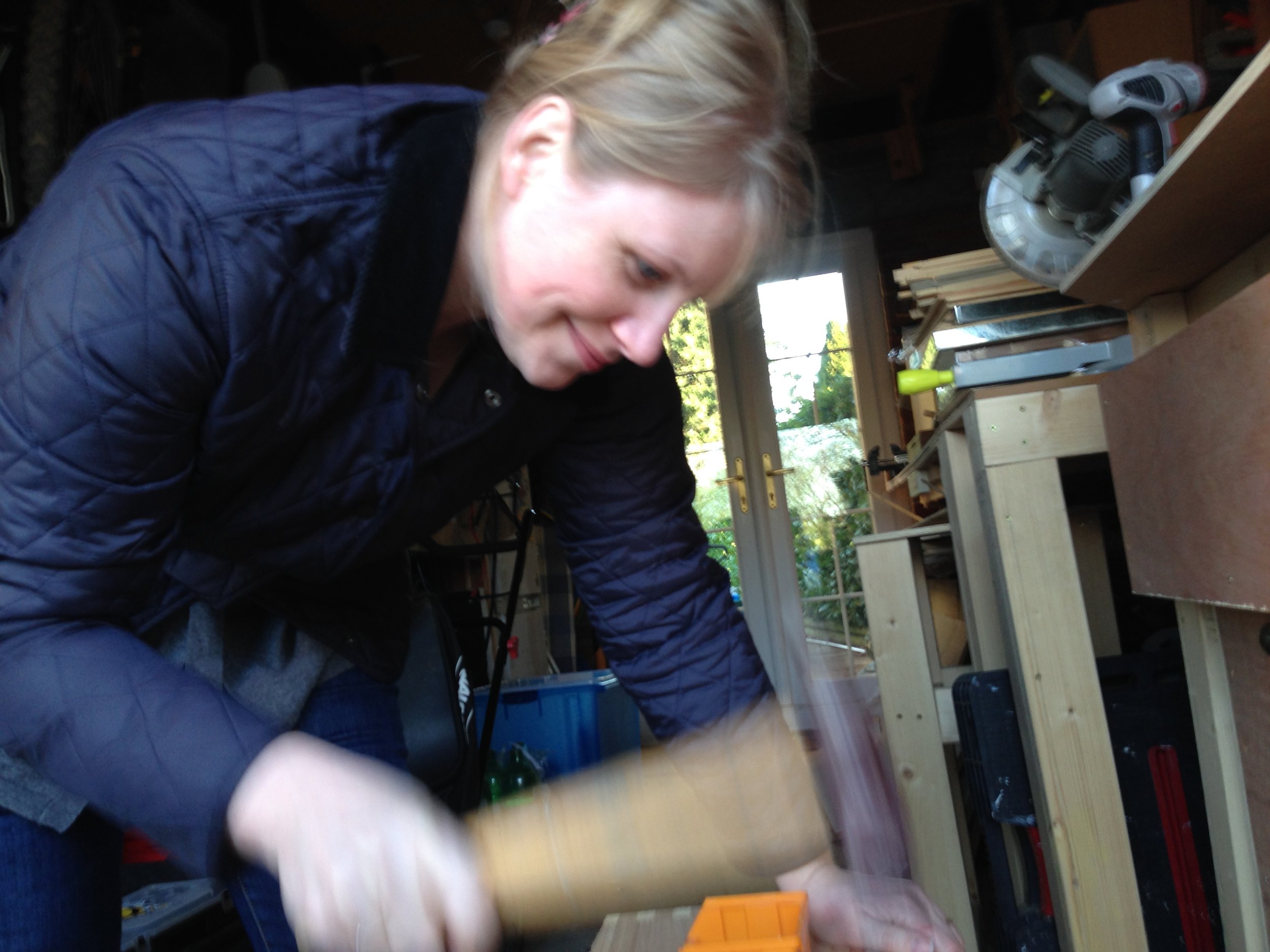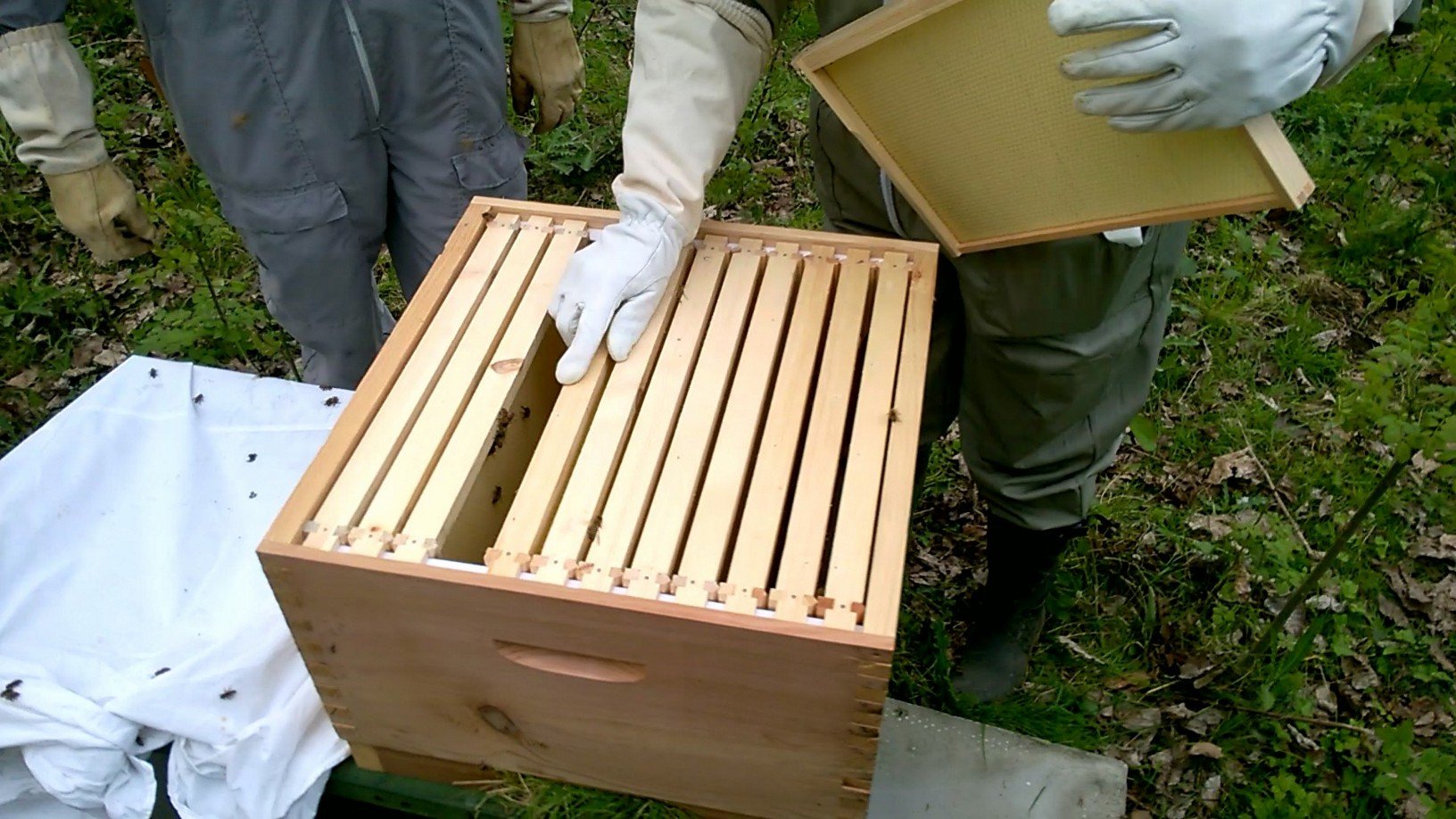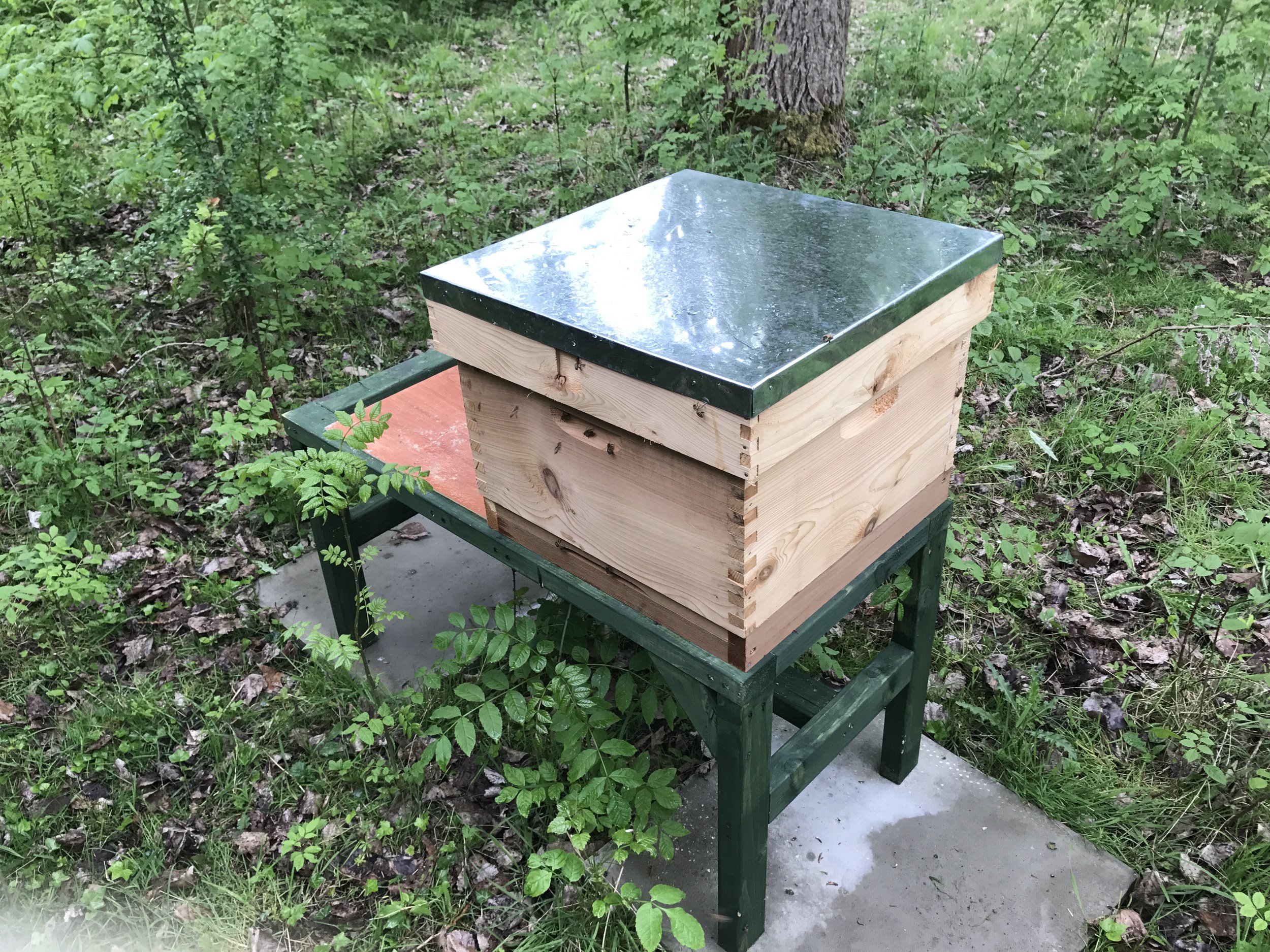Chapter Three: Book Worm
I felt like something in my life was changing but I couldn’t quite see where I would end up. Over the next few months, I read books, imagined, planned, dreamed, and signed up for another course!
The Christmas wish list consisted of bee related requests, particularly books. By the time February came around I was itching to get going; five months since the encounter with the Beekeeping group and the excitement was still there but the trepidation had crept in. I kept thinking about how my hand had swollen up after the bee sting, the weight of the hive, the number of bees and the responsibility. Was this really something I could do?
Mid-February arrived and on a cold Wednesday evening I joined about 15 or so other enthusiasts, plus several seasoned beekeepers, in a village hall to start the “Beekeeping for Beginners” course. Correction; I didn’t just turn up at the village hall, I spent about 20 minutes driving around in the dark, getting more and more annoyed as I tried to find the hall which I eventually found surrounded in winter darkness with just a gentle glow emitting from the double doors at the front.
I’ve never been great at turning up to new places alone. When I started working for my first big marketing job at a drink manufacturer, I hadn’t yet met all of the team and was invited to London to a big meeting with everyone. On arrival at Liverpool Street station I stood on the platform for the Central Line Tube and watched as people squished themselves into each train as it arrived. I’m quite clearly a country mouse and all this getting up close to strangers, hundreds of feet underground was not appealing so I thought I’d be clever and jump on a bus. After a beautiful tour of London I eventually arrived at the meeting destination and made my way into the building, I can’t remember how late I was but I think it was possibly 20 minutes or more. I walked down the corridor to the grand double doors and on opening was greeted by lots of strangers all staring at me. Thankfully it was my team but not a great first impression to say the least! Since then I’ve always given myself plenty of extra time in the knowledge that I’ll probably get lost and the last thing I want is everyone staring at me! I don’t recall being stared at by the other beekeeping novices so I can’t have been that late on my first night.
Jan, of course, was there to welcome us all and get us started on our intensive beekeeping theory. Johnny Bee was also there and took us for our first lesson which started with a sentence which has always stayed with me and which I have often imparted “first and foremost we are there to ensure the bees welfare”. As honey hadn’t ever been the catalyst for wanting to keep bees this was such an inspiring way to kick off the course and a great reminder that we are their guardians not their owners. That they are not pets like a dog or cat, in fact they are classified as livestock, but creatures that are important to our lives and in need of some security to help them survive.
The course lasted for 6 weeks and at the end of it we were provided a mentor to support us during our first year. As it was still too early to actually go out and spend time with the bees I trawled through the various beekeeping catalogues deciding what I needed and what I wanted to buy.
Once the feeling of overwhelm, looking at all the equipment options, had been once again put in its place, I ordered two beehives which arrived flat packed. Mark and I built them together using a combination of guesswork and YouTube videos and after my bee suit arrived we put everything in the garden and took photos of me and my beehive, a massive smile covering my face at the anticipation of becoming a real beekeeper.
Part of being on the beginner course allowed my name to be added to a “swarm list”. Honey bees naturally swarm each year when the colony gets too large for its current home. Rather than all the bees moving house together, the older generation along with their queen will depart the hive leaving the younger generation behind along with a future queen ready to hatch. When they leave the hive there could be ten to twenty thousand bees flying around the countryside together, they will stick together as a group and will usually pause on a branch somewhere before they find their final home. It’s at this point that the swarm can be caught and popped in a beehive. So, after building my hive and trying out my bee suit, practicing inspections without the bees in the hive and generally dreaming about the next stage, I waited for the phone call and my swarm.
It's worth noting at this point that there are other ways of obtaining bees and I usually recommend that beginners buy their bees from a beekeeper as a small colony called a nuc or nucleus, this is because you’ve a better chance of success with these than a swarm of which you won’t know it’s history and whether it is carrying any diseases for example. I had spent all my money on getting the new equipment and buying my suit so if I wanted to start keeping bees a swarm was the best option.
It was 2nd May, I was working as a Brand Marketing Manager for a food company and I’d been telling the team about the bees and they’d been very encouraging and interested in the subject. I received a phone call from Antony, the beekeeper who had loaned us the suits at the beekeeping association hive visit, to say he had just been called out to collect a swarm and I was next on the list – did I want them? Of course I wanted them! Thank goodness my manager was nice; I think he was also aware that if he didn’t let me leave for the day I would have been impossible to work with! I jumped in my car and headed home; work was over an hour from our house and the drive seemed to take hours, as I arrived on the drive I jumped out, changed my clothes and then started packing up the car boot with all of the equipment.
When I knew I wanted to keep bees I wasn’t sure that I wanted them in our garden, a perpetual worrier I felt that having them in the garden would stop us from enjoying it with our bbqs and friends and so I’d approached our local farmer and asked if I could locate some bees on the edge of his field, he was incredibly positive about the idea. I met with him to discuss locations and we landed on an area of Poplar trees which provided dappled shade but would be next to a crop of field beans that year.
As I rushed to fill the car with the hive components it felt like Christmas morning twinned with the moment you’re about to step on stage and there’s a massive lump in your stomach and another in your throat and you can’t recall your lines: a recipe of excitement, anticipation, nervous energy and “what am I actually doing here”!
Antony arrived, calmly exited his vehicle and said hello. He checked we had everything and then we drove to the new apiary site. Hive components installed on their homemade stand, Antony removed a cardboard box surrounded by a white sheet, from his car. I removed some frames from the inside of the hive to make a space and he gently pulled back the sheet as the box hummed with a few thousand honey bees within. We were then warned that “this next bit may look a bit violent but all is well”.
The box edge was bashed onto the ground, the lid swifty opened and a waterfall of bees poured into the hive.
Straggling bees were shown their new home and after the hive was put back together, the roof added, we stood back and watched the entrance to see if the ones from within would find the front door and start indicating to their sisters that this was their new home. After a few moments we saw some little faces appear, climb out and surround the gap that formed the entrance, stick their bottoms in the air and start fanning their wings – sending out a scent to their sister bees so they could find their way back to their family and into their new home. I like to think of this moment as a little celebration of sorts, a party around the hive whilst within the other workers start to build the wax comb and make the lovely new hive their home.




